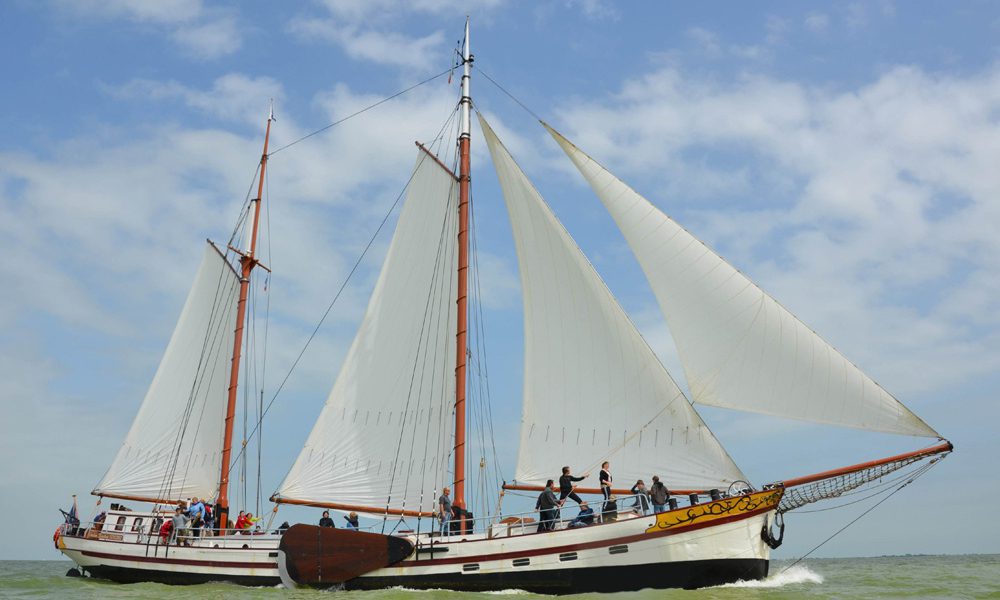The traditional frisian sailing fleet
Friesland has a flourishing traditional sailing fleet consisting of many kinds of passenger ships which can be found in sailing locations around the world. These vessels, which are the pride of Friesland, are used at education, instruction and training institutes and by organisations, businesses and families, as well as at Sail events right along the European coast. The vessels are used not only by groups, but also by individual sailing enthusiasts and those who care about our nautical-cultural heritage, whether for day trips or journeys for longer periods of time.
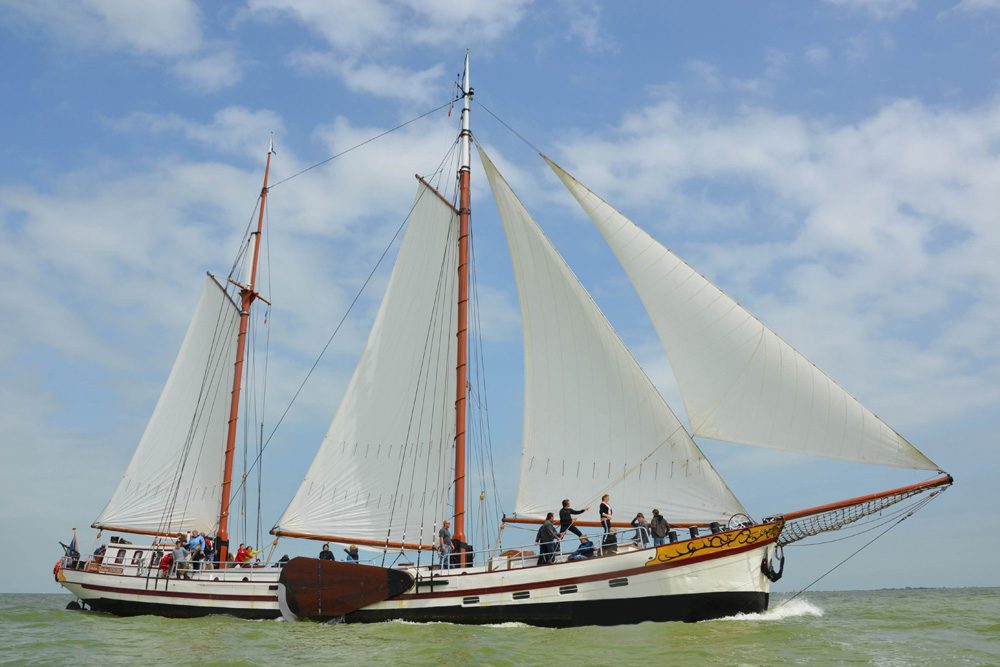
Ortolan – traditional sailing – Stavoren-IJsselmeer
Maritime heritage: restored or new
Most traditional sailing boats and motor boats, whether restored or replicated partially or in full, are made from steel and are based on models from the period extending from the 17th to the 19th centuries, when sailing was used for international freight and passenger transport, for fishing and in agriculture. Every year, real size authentic replicas are reproduced at Frisian and foreign yards based on drawings by specialised Dutch shipbuilders.
Major differences: from farmer’s barge to tall ship
The sailing ships, including imposing tall ships, completely fulfil today’s requirements as regards comfort and safety, subject to the approval of official, internationally recognised certification bodies. Just as the ships differ greatly – ranging from a completely open farmer’s barge measuring 11 metres in length, with a 49 m2 sail and without any sleeping accommodation to a brigantine measuring 62 metres in length, with a 1,300 m2 sail and five star cabins – so do the differences as regards comfort and fittings.
Cabins for a number of people with adjacent shared showers and toilets and a cooking area are the norm. The ultimate in luxury is currently a cabin with a double bed and en-suite shower and toilet, plus underfloor heating. However, due to the limited amount of space in the round hull of what is a relatively narrow vessel, most tall ships have two-person cabins with a bunk bed. Cabins as big as hotel rooms can only be found on cruise ships which operate on intercontinental routes.
The crew and the passengers: who does what?
The crew of the smaller passenger ships consists of at least a captain and a sailor. The guests on board almost always help out with the sailing. A lot of them cook and clean. These are people who chose an active holiday or a teambuilding sailing trip. In reality you can determine how much work you want others to do for you, for example in the form of an on-board chef or catering services en route. A luxury sailing cruise ship has at least 5 crew who are responsible for looking after both the vessel and the passengers. Nevertheless, anyone who wants a more active role is more than welcome to join in.
Classic sailing: a unique experience for everyone
Sailing on a traditional sailing ship is a unique experience. The atmosphere of olden times is calming and romantic to some and inspiring to others. Action, excitement and relaxation follow the same course. Landlubbers become enthusiastic sailors. Individuals become a team, as if by magic. Everyone becomes keen to help out wherever necessary. The confrontation with the weather and the wind and the land and the sea is a recipe for an action-packed adventure: hoisting and lowering sails, reefing, steering, navigating, in and out of sea locks, falling dry on the mudflats at low tide or tying up in a historic harbour town. In between there is plenty of time to sunbathe on deck or relax in the comfortable cabins or salon. In any case, on a classic sailing ship no one day is the same.
The sailing areas
Each ship has its own sailing area which has to do with the seaworthiness of the vessel and its crew, as well as with the specialist expertise of the shipping company or the captain. Boats from Friesland sail mainly on the IJsselmeer, the rivers and lakes, the Wadden Sea and the Dutch North Sea and the German North Sea and Baltic Sea. The departure harbours are in the same sailing areas and that minimises the journey time to the boat while maximising the sailing pleasure. Frisian sea-sailing vessels can be found not only along the Western European coast but also in the Mediterranean, the Atlantic Ocean and in the Caribbean.
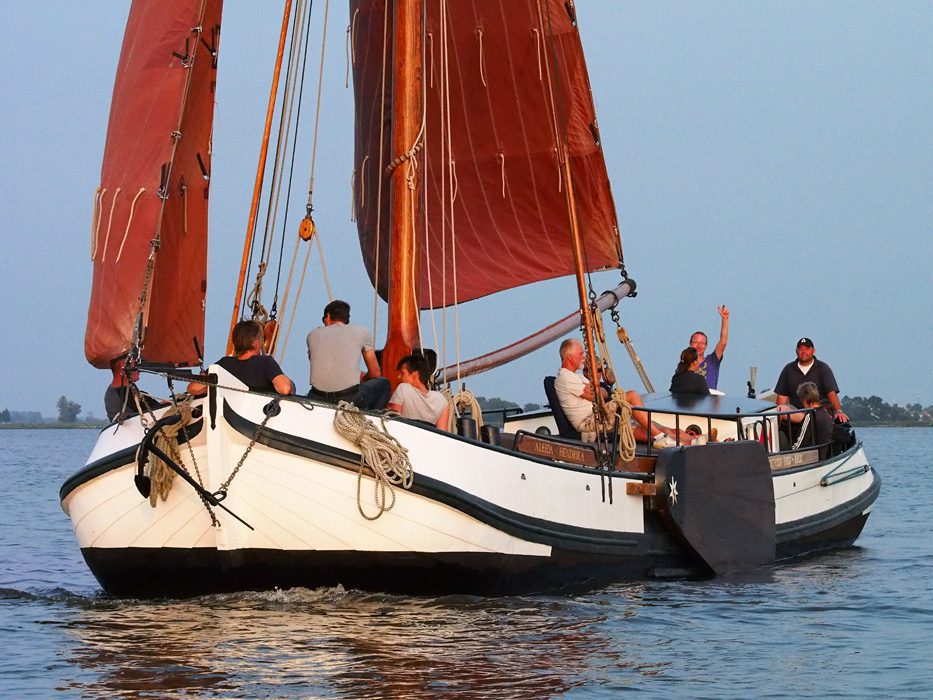
Beurtveer – Heeg-Balk
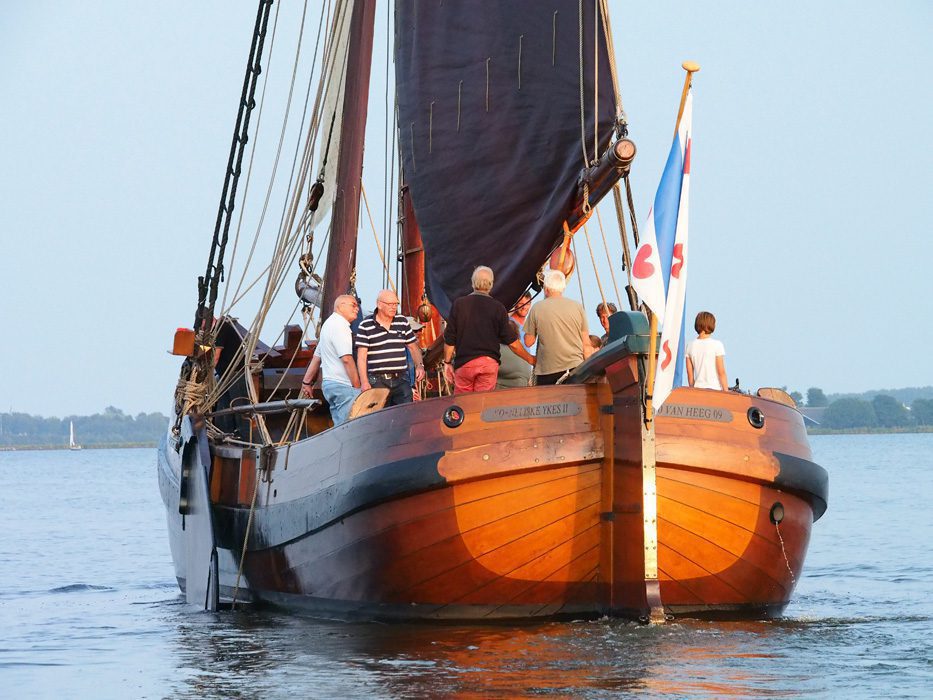
Palingaak – Heeg
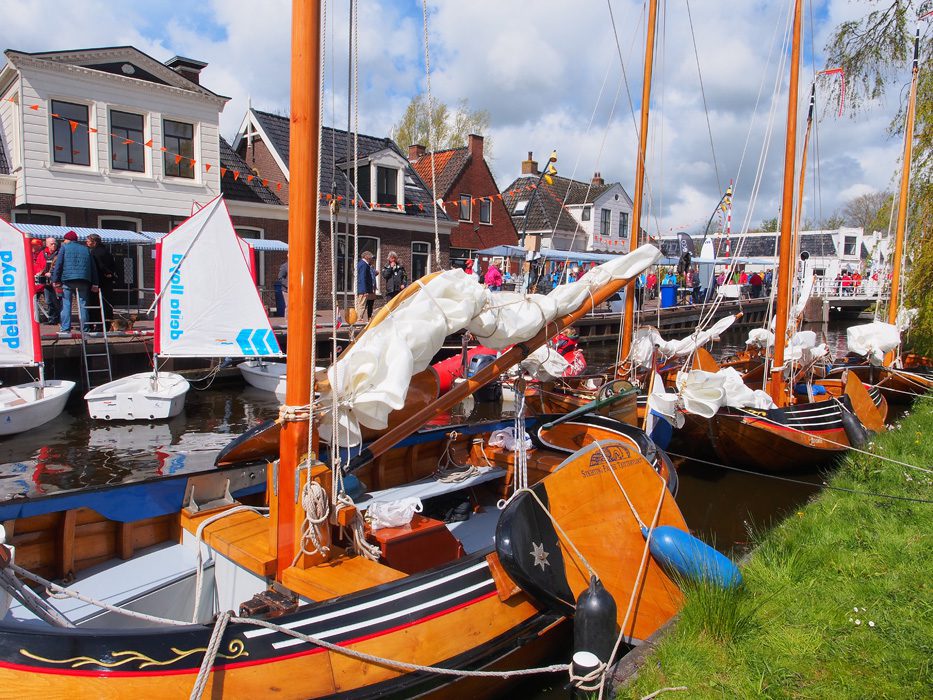
Frisian Tjotter
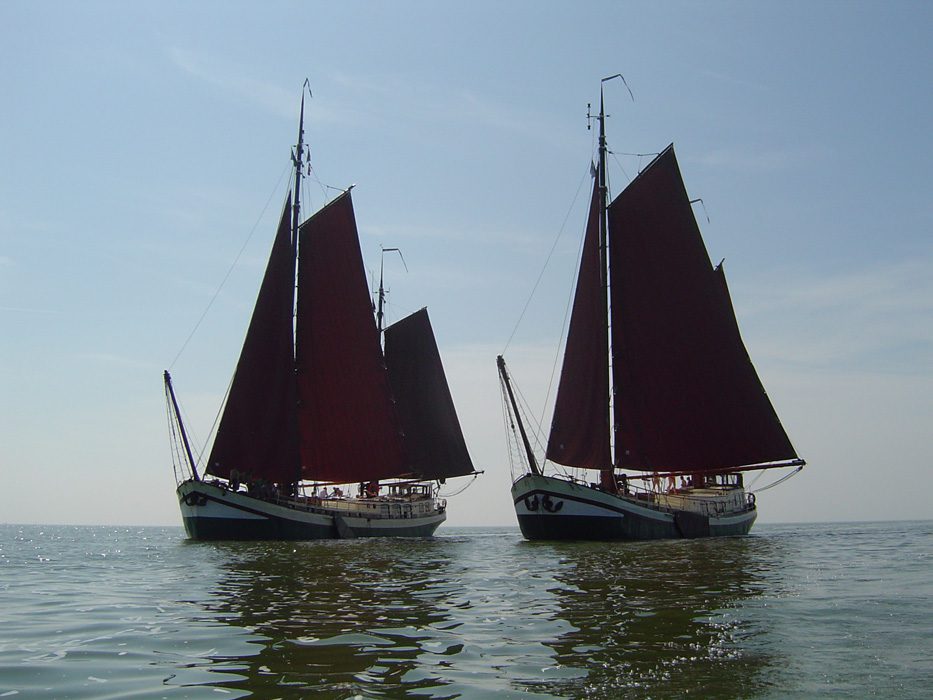
Traditional sailing lake IJsselmeer and Frisian lakes
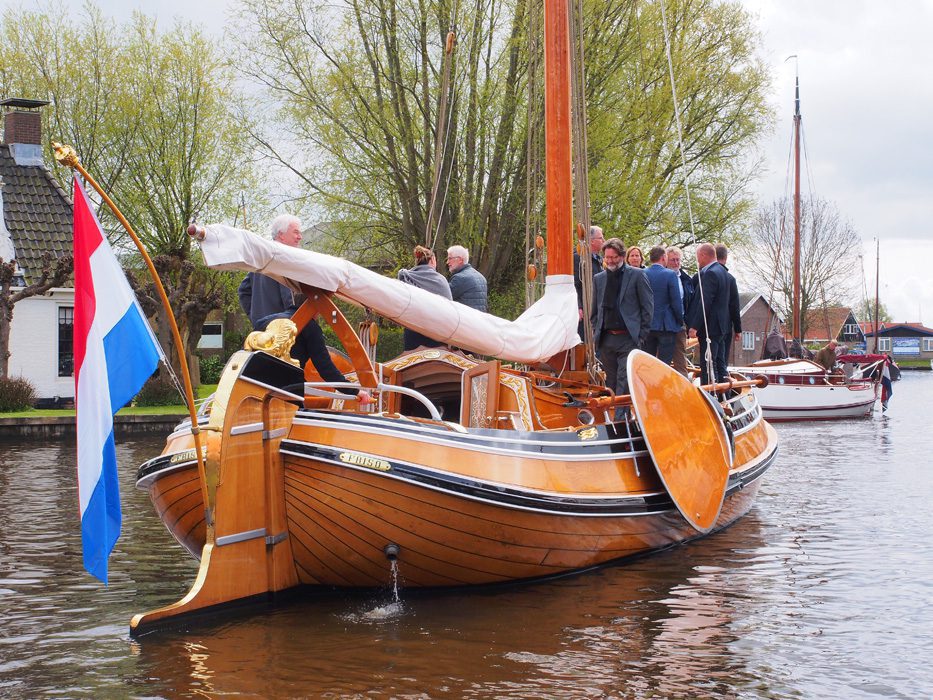
Boeier Friso – Representation boat ‘Statenjacht’ of the province of Friesland
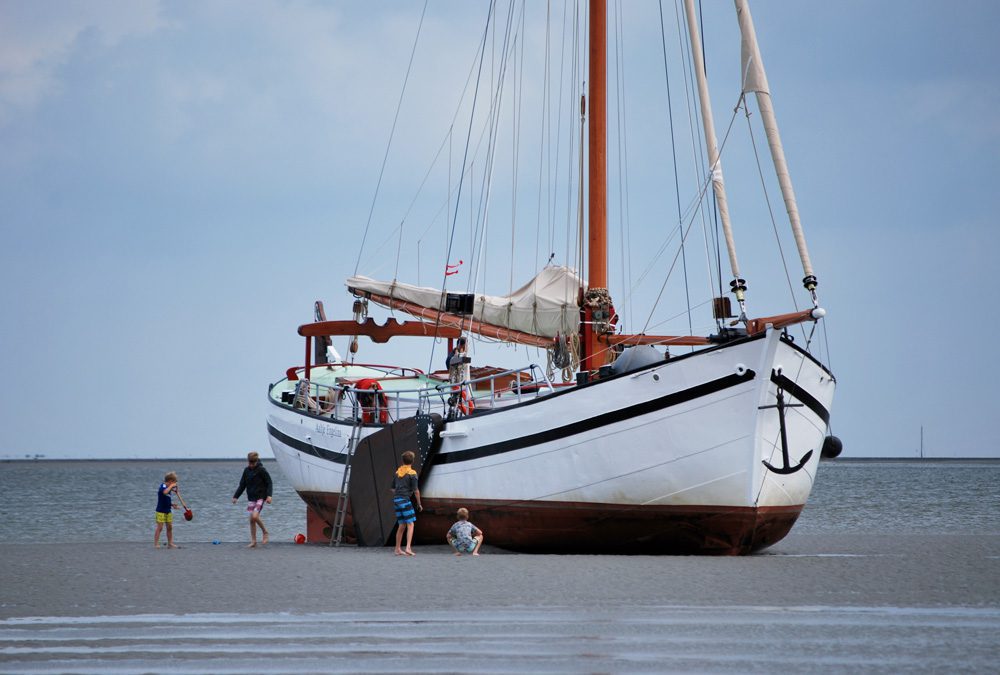
Stevenaak Aaltje Engelina – Wadden Sea – falling dry on the mud flats at low tide
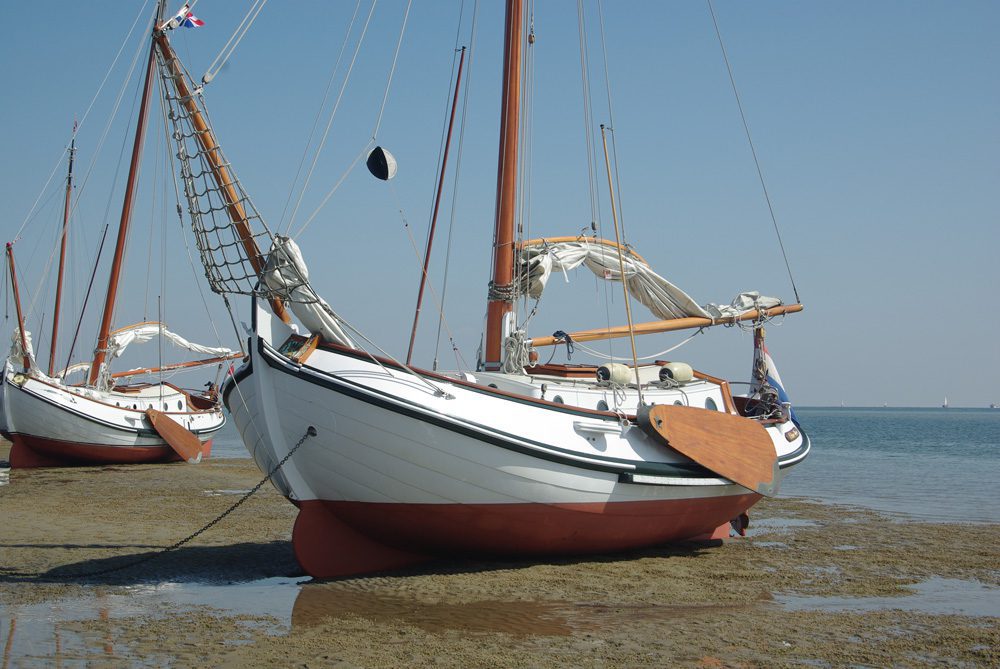
Lemsteraak – Wadden Sea
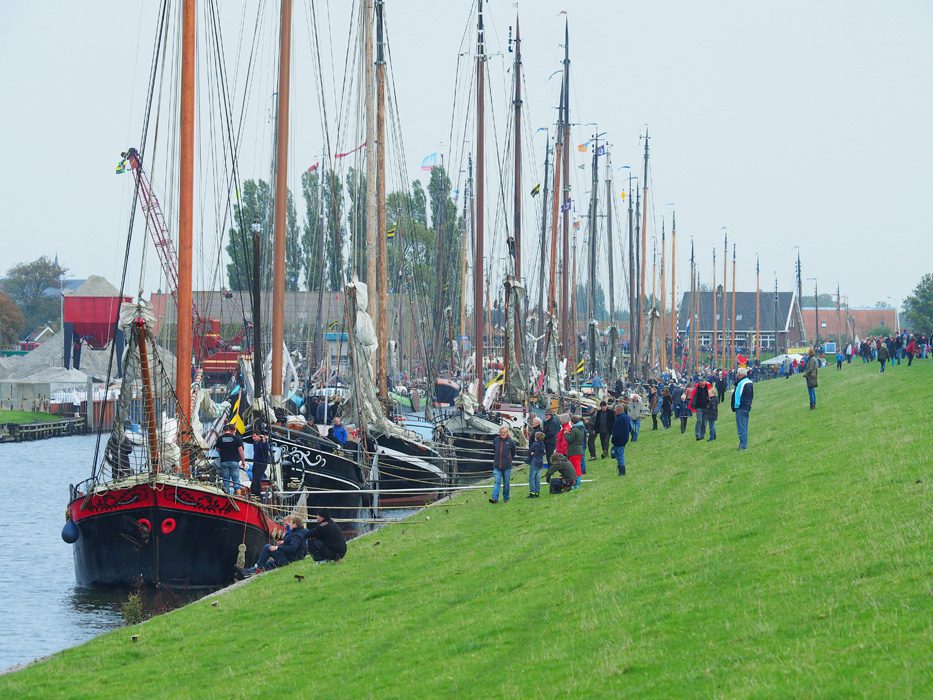
Strontrace – traditional sailing – Workum-IJsselmeer
